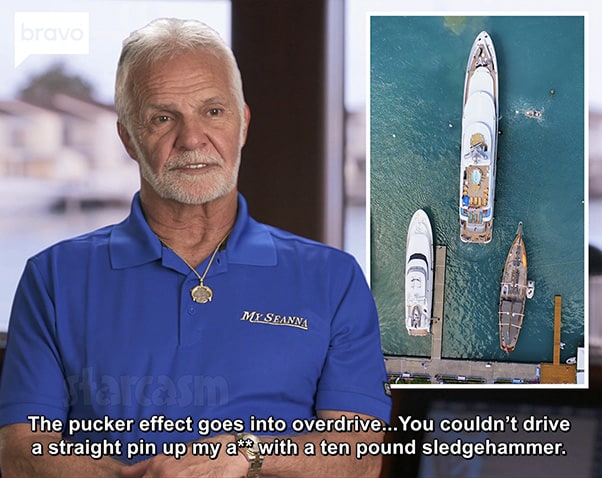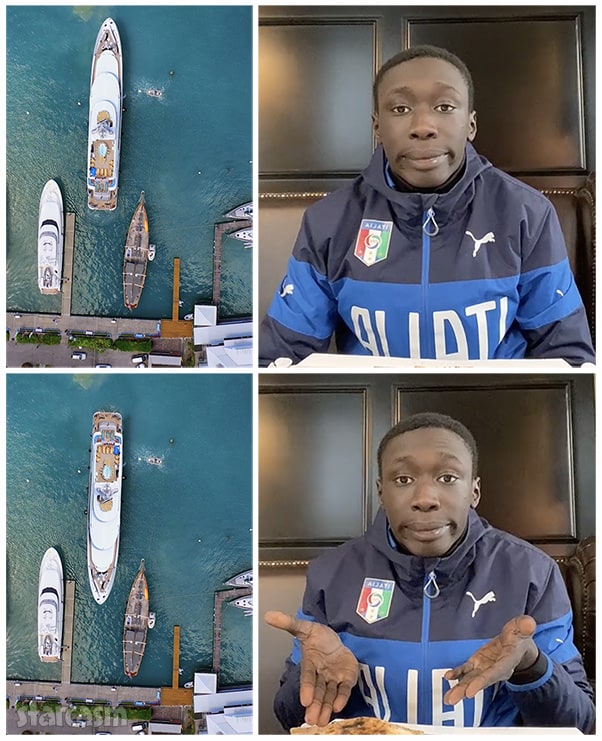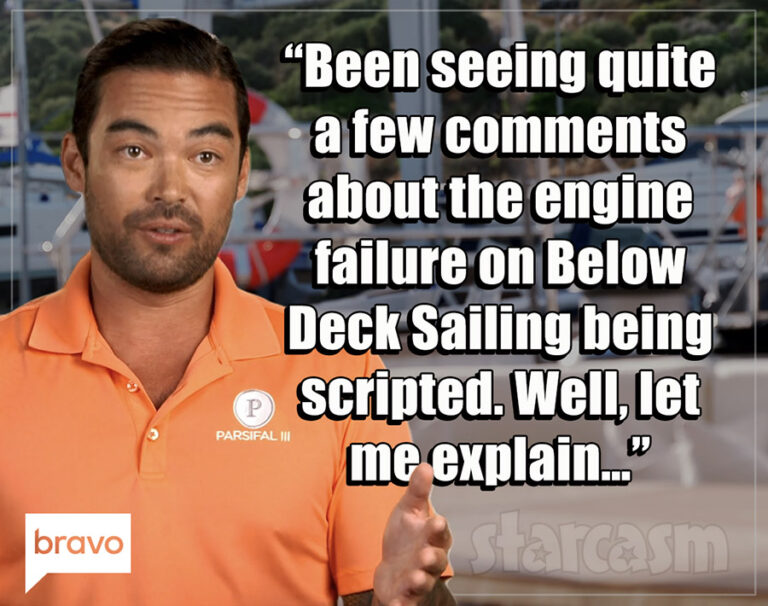BELOW DECK Why is it so hard to dock a yacht?
Each installment of Bravo’s Below Deck franchise has a literal boatload of drama. The biggest sources of drama are, of course, the cast and the charter guests. The other consistent source of drama (and stress) throughout all the Below Deck shows is docking the boats. So, why is docking a yacht or super yacht so difficult?
The most important thing to remember about the difficulty of docking a yacht is the simple fact that it is a yacht. On water. Unlike parking a car, boats are floating on water without the equivalent of tires to prevent them from sliding sideways. It’s also harder to start and stop quickly or precisely.
Making the docking process more difficult is the fact that the boat is dealing with multiple invisible and unpredictable forces. Water currents can push the boat in one direction, while wind can push it in another — or even the same direction.
Obviously, there are ways to account for wind speed and direction. Plus, currents in a harbor are generally much weaker than on open water. Regardless, having a massive object slipping and sliding on the water’s surface with air and water exerting constant pressure (or even no pressure) makes docking tricky at best, and extremely difficult at worst.
As Below Deck viewers are well aware, the yachts often dock in very tight spaces between other large, and very expensive vessels. As mentioned often on the show, any mistake can result in a collision resulting in tens or hundreds of thousands of dollars in damage, and potentially the end of the charter season.
Another aspect that doesn’t get talked about much on the show is the fact that these massive yachts have to turn around prior to backing into their designated spot, and sometimes the depth of the water doesn’t allow for much room at all to pivot.
Captain Lee Rosbach talked a little bit about a particularly tight turnaround at Jolly Harbour in Antigua, which was featured on a Below Deck episode that aired in November of 2020.
Fans may recall that there was extra tension during the docking, including Captain Lee demanding radio silence until it was done. (There was some chatter on the radio from the interior, which drew the ire of Captain Lee.)
This particular docking was the source for one of Captain Lee’s famous quotes. “The pucker effect goes into overdrive,” he said of the Jolly Harbour docking process, before adding: “You couldn’t drive a straight pin up my a** with a ten pound sledgehammer.”
Getting back to Captain Lee’s commentary. “The issue with that specific area is when I’m spinning the yacht around there is nothing but shallow water all around me, and if I let the current or wind or tide move me outside of 6 feet on either side of the boat, I run the risk of grounding the vessel, and that’s when things get expensive and ugly,” Captain Lee explained in his Captain’s Blog after the episode aired. “Just so you know. But the crew came thru, so kudos to them.”
Yacht docking terms
As an extra bonus, here’s a very brief glossary of some of the things needed/often used to dock a superyacht:
Tender – Small boat. This could be the yacht’s tender or another small boat from the harbor. The smaller, more agile vessel is not a requirement for docking a superyacht, but it gives the captain eyes and ears on the water, which can be a very valuable perspective.
Fender – A yacht fender is a large padded and/or inflated cushion suspended by a rope over the side of the boat to prevent damage when boats bump into each other. It’s important that they be suspended at the correct height so that the cushions are exactly where the point of contact between the two vessels will be. Given the tight spaces these superyachts often dock in, and their value, fenders are an absolute requirement.
Anchor – Large, heavy objects that are able to secure themselves to the ocean/sea/lake floor. These are often used on the bow (front of the boat) when docking to prevent the vessel from moving backwards into the dock.
Dolphin – “A dolphin is a man-made, marine, independent structure that extends above the water level. It may or may not be connected to a lager pier, wharf, or bridge structure by pedestrian access walkways.” (Wikipedia) Some docks offer pre-existing dolphins that boats are able to use in lieu of anchors. They can secure their bow lines to the dolphin(s) to prevent the ship from drifting backwards.
Dock line – This is the rope that ties the boat to the dock. for superyachets, dock lines are quite large and require the much smaller heaving lines in order to initially get them from the boat to the dock.
Heaving line – A smaller rope that usually has a weight at the end that makes it easier to throw (or heave) the rope. The heaving line is connected to the larger dock line, and once someone on the dock has the heaving line they can then pull the much heavier dock line to them and tie/cleat it to the dock.
Spring line – A spring line is a line connecting the boat to the dock on a diagonal. It’s my understanding that these are often used to assist in maneuvering when leaving the dock, but I am guessing they also provide additional stability in regards to holding the boat in place while docked.
Windlass – This is the mechanical spool that the dock lines are seen wrapped around. It gives a person much more leverage when tightening the rope.
I will wrap up this post with a couple of videos featuring yachts docking. The first recorded from the dock and includes great labels throughout the process. The second is a very elaborate video showing the docking process starting well before the boat reaches the dock. It is shot with multiple cameras, including one mounted on a drone!
Asa Hawks is a writer and editor for Starcasm. You can contact Asa via Twitter, Facebook, or email at starcasmtips(at)yahoo.com








